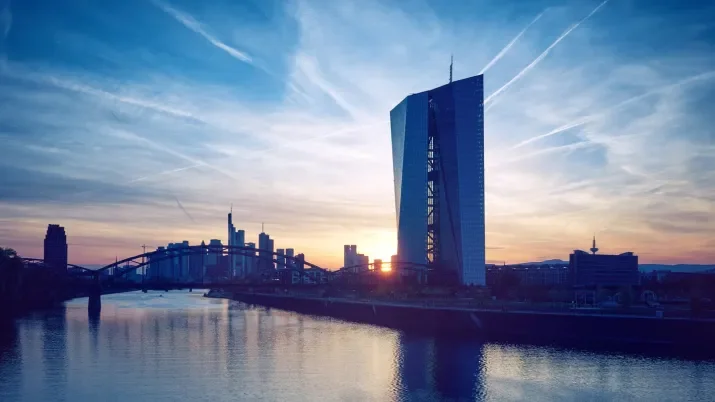Are Europe’s winter prospects warming up?
The gas situation in Europe has become a major driver of market sentiment as the year has progressed. Following Russia’s invasion of Ukraine, natural gas prices have increased significantly in Europe as Russia has restricted and at times completely halted exports.
European countries have reacted by actively cutting energy usage, increasing purchases of liquified natural gas (LNG) from places such as the US and Qatar, and subsidising energy consumption via various initiatives to soften the blow to consumers and companies. The impact on growth projections has been substantial, with countries such as Germany (with its higher dependence on Russian gas and lack of LNG infrastructure) bearing the brunt of the adjustment.
How bad is the winter now looking for Europe?
While Europe’s gas woes are far from over, it is certainly true that prices have come off significantly from their August peaks. Dutch spot gas prices are 82% below those levels, while one-month forwards are 61% lower. Prices are still elevated compared to pre-invasion levels, but it is fair to say that the situation was looking a lot worse only a couple of months ago. Gas storage facilities are 95% full and warmer weather has helped delay the heating season. At the same time, partly due to government action and partly due to high prices, demand is down 10% on last year, according to the International Energy Agency. These factors have allowed policymakers and markets to anticipate that forced energy rationing is likely to be avoided this winter. In addition, the recent fall in prices means the estimated cost of the enormous fiscal subsidies put in place is much lower than had been expected back in August. To be clear, the risk of major issues does still exist. If the winter winds up being a lot colder than usual then the risk of rationing will return, but as it stands the probability of this happening has been substantially reduced.
Medium term challenges remain, however. Europe will be forced to dramatically change its energy mix over a short period of time. This means that until more LNG capacity comes online, Europe will be competing with other LNG importers for supplies, with the main competitor being China. China’s COVID policies and economic slowdown mean its year-to-date demand is down 20% on last year, but this might change in 2023. It also remains to be seen if Russia cuts exports completely to Europe in the coming months, which could amplify the gap between supply and demand. On the other hand, Europe’s hydro and nuclear electricity generation is down 20% and 16% respectively so far in 2022, due to poor hydrology and other factors, which has put some additional pressure on gas markets – this situation may ease in 2023.
Turning to the economic impact in terms of GDP growth, it is notoriously difficult to estimate the size of the hit, but the direction of the adjustment is very clearly negative. On the one hand, demand destruction will inevitably lead to fewer goods and services being produced. On the other, the size of the fiscal packages we have seen to help bring gas prices down has been staggering. Germany’s package alone is €200bn, or 5.5% of its GDP. Full details are yet to be ironed out, but they will include price caps for businesses and consumers, one-off payments to help with bills and incentives to reduce demand. In GDP terms that is a boost for private consumption as the hit to disposable income diminishes, as well as a possible boost for government consumption (though mainly in the form of transfers), and we can also expect better consumer and corporate confidence as the truly dire scenario is averted. We will have to wait for the full details to properly assess the numeric impact on GDP, but the size of the support is extreme.
All things considered, it looks like the worst case scenario many feared for the European winter will not materialise. Europe has moved swiftly to replace Russian gas, and to cushion consumers and companies from extremely high energy prices. This does not mean Europe is out of the woods. There are myriad factors that will impact Europe’s ability to refill its storage capacity for next winter. Russia’s export policies, China’s LNG demand and Europe’s investment in LNG infrastructure will all have a say in that, as will the speed of Europe’s shift towards renewables and of course weather patterns.




